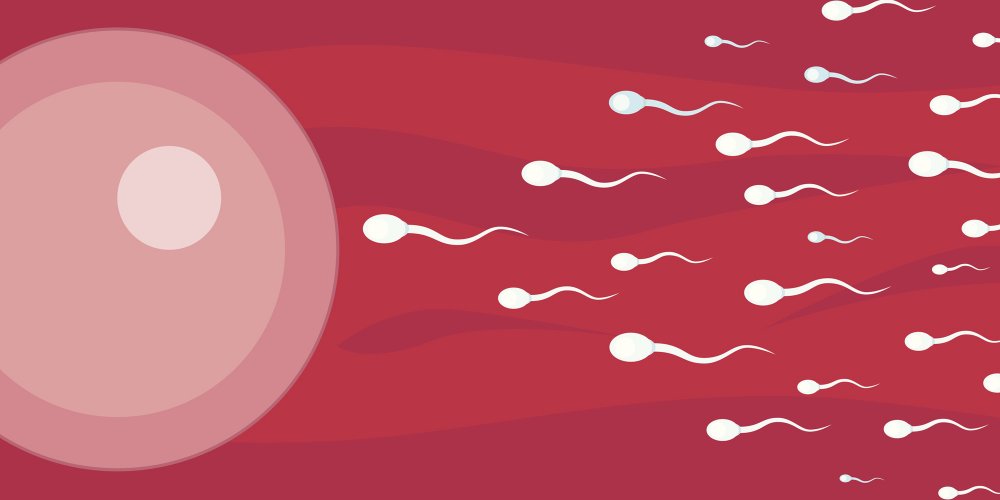After being the symbol of the liberation of women, the pill has a repulsive effect today. It is now perceived by many of us as too restrictive and too risky, especially since the scandal of 3rd generation pills .
As a result, instead of opting for the IUD or the contraceptive implant, a growing proportion of the female population relies on natural methods to avoid unwanted pregnancy: 9.5% of French women according to a survey of the National Institute of Demographic Studies (INED), against 5.5% at the beginning of the 2000s! And their number continues to climb if we believe the multitude of testimonials posted on the Internet forums and social networks.
The worry of gynecologists
The green wave is of course there. "It is out of the question that I continue to swallow synthetic hormones while I strive to eat organic," says Caroline, 26, who has stopped the pill for a few months. "I prefer to leave my body now, without imposing a chemical or foreign body," says Sophie, 31, a new follower of natural contraception. " I hunt for endocrine disruptors, says Léa who is the same age.This naturally led me to turn away from the pill". Financial difficulties and the rejection of everything medical also push many young women to take the plunge.
This breaker begins to seriously worry the gynecologists. At the end of February, the National Federation of Colleges of Medical Gynecology sounded the alarm and denounced "the relative reliability of these methods."
According to its president, Dr. Pia de Reilhac, "the failure rate of natural methods is of the order of 15 to 20%". On the site of Family Planning, the mentioned risk is even higher: from 30 to 40%!
Withdrawal, Ogino method ... Very different practices
In reality, it is difficult to indicate a percentage of overall failure because the range of natural contraceptive methods is as wide as it is varied. Impossible to put them all in the same bag. The vaginal douche , which consists of cleaning her vagina after sexual intercourse, is indeed not a credible technique (40% failure). But few women use it today.
In contrast, coitus interruptus (the man withdraws before ejaculation) is still fashionable. Not only is this practice frustrating for the man and worrying for the woman - who wonders if her partner will react in time - but her reliability is also questionable. In real conditions, the failure rate is 19% per year. The explanation is twofold: it is not easy for these gentlemen to hold each other each time and the seminal fluid emitted before ejaculation often contains some spermatozoa, which may prove to be fertile.
The calendar method , known as the Ogino method , is even less effective. Consisting of calculating the period of ovulation, during which abstinence is required, it gave birth to many babies after the war. No wonder since most women are not Swiss clocks. Their menstrual cycles fluctuate regularly. It may be longer or shorter depending on the month.
And, above all, ovulation does not occur systematically mid-term, that is to say the 14th day of a 28 day cycle. It can be between the 8th and the 18th day of the cycle. An infection, a stress or a big tiredness is enough to break the mechanics. Result: we can perform well calculations, nothing is guaranteed. According to Dr. Margueritte Duane, fertility specialist at Georgetown University (USA), the failure rate is close to 12%. In France, gynecologists estimate it at 25%.
Observation of signs of fertility, questionable reliability
Spotting the changes that occur in one's body at the time of ovulation is certainly more reliable. But again, several methods exist. Many women follow their temperature curve to determine their fertility period. In fact, body temperature increases slightly - from 0.2 to 0.5 ° C - when the ovaries release an oocyte into the fallopian tubes, due to increased production of progesterone.
But this technique requires taking its temperature every morning when waking up, always at the same time. And be careful: if you have a cold, if you drank too much alcohol the day before or if you got up at night to calm the crying of the last, your landmarks are scrambled.
And do not necessarily rely on smartphone apps to help you. One of the most famous of these - Natural Cycles, which boasts 700,000 users worldwide - hit the headlines in January 2018 following the revelations of a Swedish hospital: of 668 induced abortions (abortions) by the establishment, 37 were made on followers of this famous app.
The Billings method , which relies a priori on the observation of cervical mucus, exposes to less hazard. In the fertile period, the cervix secretes a fluid mucus, shooting like egg white, to facilitate the progression of the sperm towards the uterus and the fallopian tubes. And outside this period, the mucus is less abundant, thick and pasty.
By analyzing each morning the consistency of the mucus with the fingers, it is theoretically possible to evaluate the risk of getting pregnant. The fertile period begins at the beginning of the glowing mucus and ends 96 hours after the last day of slime. But again, beware: the mucus can change appearance regardless of the female cycle , following vaginal inflammation, the application of a lubricant or taking a drug.
"The theoretical failure rate of the Billings method is only 1.1%, but in actual conditions of use it amounts to 10.5%," notes Dr. Margueritte Duane.
Symptothermia, the most complete method
Modeled by an Austrian doctor, this method of natural contraception amalgamates several physiological indices of fertility: the fluctuation of the body temperature, the modification of the cervical mucus, as well as the position of the neck of the uterus.
During the female cycle, the cervix changes its appearance very clearly. In ovulation (and menstruation), it is soft, high in the vagina and fully open. We can slip in a finger. Once ovulation is over, it closes, hardens, tilts and is positioned lower in the vagina. With a little habit, we can easily identify these changes.
Combining all these observations, the failure rate is only 2% according to the World Health Organization (WHO), if the method is well applied. To do this, a learning time of 3 to 6 months is necessary to accurately identify the subtle transformations that accompany ovulation.
The cervical self-examination is not obvious. It requires being comfortable with one's body and requires a good knowledge of one's intimacy. "I was scared at first to be wrong," recalls Clara, 34. But I got help * and now I'm done with the exercise. I proceed in the morning to my small checks without even thinking about it. It's very fast ".
Remember, however, that hormonal contraception is not the only conventional option. The copper IUD is very effective (0.8% failure in actual use) and can now be offered to young women who have not had children. And the condom is the only way to avoid getting a sexually transmitted infection, such as syphilis or AIDS. Important when one is not in stable couple.
Each one to decide in all knowledge of cause. Talk to your doctor or gynecologist.
* The Swiss Foundation SymptoTherm offers a tutorial on the web, as well as an app with the possibility of personal follow-up. https://sympto.org



